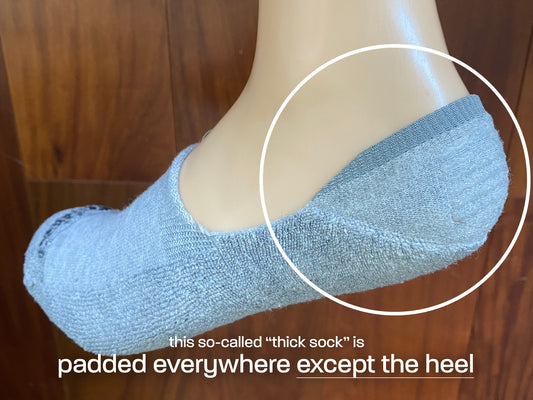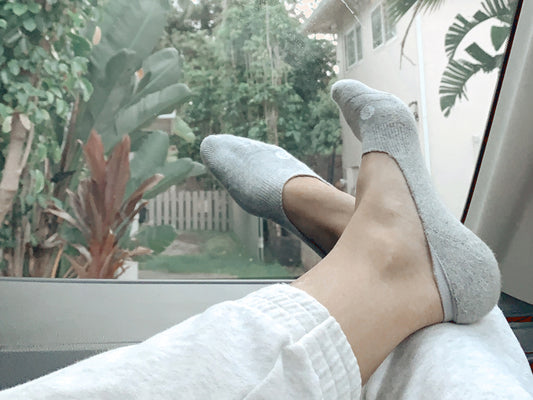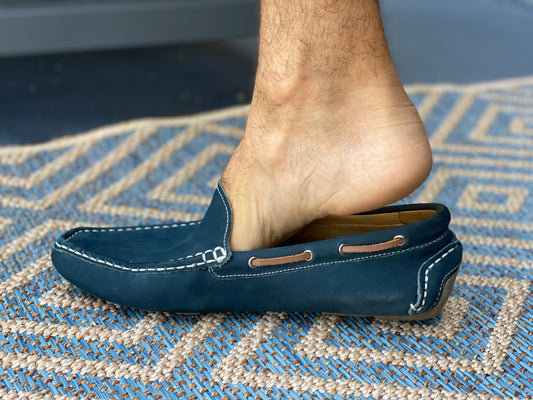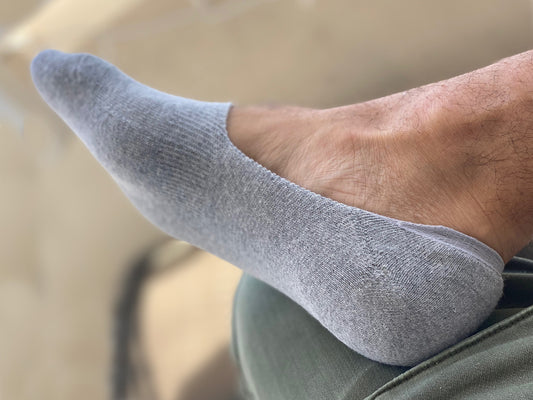
Heel blisters can turn an enjoyable day into an agonizing experience. Whether you’re walking, running, or simply wearing your favorite shoes, constant rubbing can quickly lead to painful, red sores.
The good news? Heel blister prevention is entirely within your control. With the right strategies—ranging from smarter footwear choices to selecting the best socks—you could say goodbye to blisters for good. It’s all about understanding the root causes and taking simple steps to prevent the friction that leads to blisters. Discover how a few tweaks in your routine can make all the difference in your daily comfort.
What Causes Heel Blisters?
Friction between your skin and shoes is the leading cause of blisters. When your heel rubs against the back of your shoe with every step, the constant movement irritates the skin, causing it to form a blister. Reducing friction is key to stopping blisters.
Shoes that are too tight or too loose are major contributors to blister formation. Tight shoes squeeze your feet, while loose ones allow your feet to move too much, both leading to friction. Finding the right fit is crucial to preventing blisters.
Some shoe materials are more likely to cause blisters than others. Synthetic materials, for example, tend to trap heat and moisture, which increases the likelihood of blisters. Opt for breathable materials like leather or mesh to keep your feet cool and comfortable.
Moisture weakens the skin, making it more vulnerable to the effects of friction. When your feet sweat, they become more susceptible to blistering. Keeping your feet dry is essential to blister prevention.
Foot Shape: People with narrow heels may find themselves more prone to blisters because their heels don’t fit properly in standard shoes, causing slippage. If you have narrow heels, finding footwear that fits your foot shape could significantly reduce blister risk.
Common Mistakes That Make Heel Blisters Worse

One of the worst things you can do is ignore the early signs of a blister. That small discomfort can quickly turn into a full-blown blister. Addressing the issue early by adding padding or changing shoes can save you from days of pain.
Choosing Style Over Comfort
We’ve all been there—choosing a pair of stylish shoes that hurt your feet. While fashion is important, it’s not worth the pain of blisters. Prioritizing comfort over style can prevent blisters from ruining your day.
Wearing the Wrong Socks
Cotton socks might feel soft, but they tend to hold onto moisture, increasing your risk of blisters. Instead, choose socks made from moisture-wicking materials that keep your feet dry and comfortable, even during long periods of wear.
The Importance of Socks in Preventing Heel Blisters

Socks are your first line of defense against blisters. Look for socks made from materials that reduce friction and wick away moisture. Wool and synthetic blends are ideal for keeping your feet dry and blister-free.
Padded socks, like Skinnys, provide extra cushioning in key areas like the heel, preventing friction and reducing the chance of blisters. These socks are especially helpful if you have narrow heels or experience frequent heel slippage.
Socks that wick moisture away from your skin are essential for blister prevention. When your feet stay dry, they’re less likely to blister. Invest in moisture-wicking socks, especially for long walks or workouts.
Padding and Protection for Your Feet
Heel pads and inserts are a great way to add cushioning to your shoes, reducing friction and preventing blisters. Look for pads that are designed specifically to fit the contours of your heel for maximum comfort.
Silicone gel pads provide a smooth, cushioned surface that prevents your heel from rubbing against your shoe. They’re easy to use—simply place them inside your shoes where friction occurs.
How To Handle Heel Blisters If They Happen
If you get a blister, the first step is to protect it. Use a blister bandage or moleskin to cushion the area and prevent further irritation. Avoid popping the blister, as this can lead to infection.

To treat a blister, gently clean the area with soap and water. Apply an antibiotic ointment, and cover it with a bandage. Keep it clean and dry to promote healing.
If your blister becomes red, swollen, or filled with pus, it may be infected. In this case, it’s best to see a doctor for treatment to avoid further complications.
Final Thoughts: Walking Blister-Free for Good
The best way to avoid heel blisters is through prevention. With the right shoes, socks, and foot care habits, you can keep your feet comfortable and blister-free.
Choosing the right footwear and socks can make all the difference in preventing blisters. Invest in quality products that fit well and keep your feet dry.
With these tips in mind, you’re ready to say goodbye to heel blisters for good. Keep your feet happy, healthy, and comfortable, and enjoy every step of your day!




